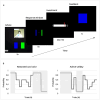Dissecting how psychopathic traits are linked to learning in different contexts: A multilevel computational and electrophysiological approach
- PMID: 40702349
- PMCID: PMC12464111
- DOI: 10.3758/s13415-025-01295-z
Dissecting how psychopathic traits are linked to learning in different contexts: A multilevel computational and electrophysiological approach
Abstract
Previous studies suggest that elevated psychopathic traits, linked to social norm violations and personal gain-seeking, may be caused by impairments in associative learning. Recent advances in computational modelling offer insight into the unobservable processes that are thought to underly associative learning. Using such a model, the present study investigated the associations between psychopathic traits in a nonoffender sample and the cognitive computations underlying adaptive behavior during associative learning. We also investigated the potential engagement of adaptive control processes by measuring oscillatory theta activity in the prefrontal cortex. Participants performed a reinforcement learning task in which the trade-off between using social and nonsocial information affected task performance and the associated monetary reward. The findings indicated that increasing levels of psychopathic traits co-occurred with reduced learning from social information and suggested that antisocial traits were linked to a reduced ability to track changes in the trustworthiness of social advice over time. This did not affect the preference for one information source and the risk taken to obtain a high reward. Furthermore, midfrontal theta power was negatively linked to levels of psychopathic traits, aligning with indications that theta is involved in volatility tracking of social information. Importantly, we consider that the task design may reflect reduced sensitivity to secondary, rather than specifically social information. The current study provides support for a relationship between associative learning, theta power, and psychopathic traits and contributes to our understanding of the mechanisms that may explain reduced responsiveness to current treatment interventions in individuals with psychopathy.
Keywords: Associative learning; Computational modelling; Psychopathy; Social learning; Theta power.
© 2025. The Author(s).
Conflict of interest statement
Declarations. Ethics approval: Procedures were approved by the Ethics Committee Social Sciences of the Radboud University Nijmegen (ECSW2017 - 0805–512) and research has been performed in accordance with the Declaration of Helsinki. Consent to participate: All participants provided written informed consent to participate prior to the onset of the study. Consent to publish: All participants provided written informed consent to publish the not directly identifiable experimental data; e.g., the data are publicly shared with persons interested in the data, for instance for verification, reuse, and/or replication. Preregistration: The study was not preregistered. Conflict of interest: The authors declare that they have no conflict of interest.
Figures







References
-
- Baumgartner, T., Heinrichs, M., Vonlanthen, A., Fischbacher, U., & Fehr, E. (2008). Oxytocin shapes the neural circuitry of trust and trust adaptation in humans. Neuron,58(4), 639–650. - PubMed
-
- Behrens, T. E., Woolrich, M. W., Walton, M. E., & Rushworth, M. F. (2007). Learning the value of information in an uncertain world. Nature Neuroscience,10(9), 1214–1221. - PubMed
-
- Behrens, T. E., Hunt, L. T., & Rushworth, M. F. (2009). The computation of social behavior. Science,324(5931), 1160–1164. - PubMed
MeSH terms
Grants and funding
LinkOut - more resources
Full Text Sources

